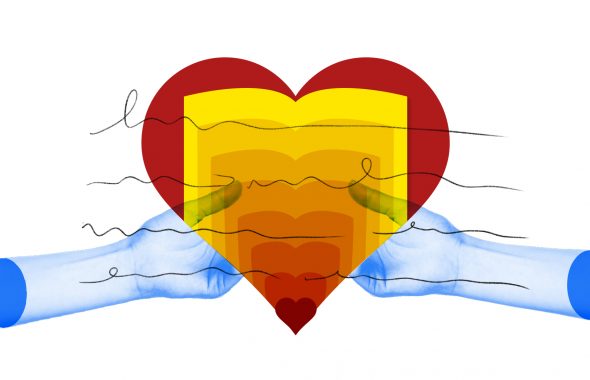May is Asian American and Pacific Islander Heritage Month, a time to celebrate the contributions of Asian Americans and Pacific Islanders (AAPI) to the culture and history of America.
For those who are not AAPI, this observance month also comes with the serious responsibility to acknowledge some of the complexities of these terms and consider better ways to use them.
Recently in the US, there has been a significant increase in the number of reported racist attacks and hate crimes against Asian Americans. AAPI Heritage Month presents us with a good opportunity to discuss how language can contribute to marginalizing the AAPI community. At the same time, it gives us a chance to examine some of the labels and terms that we use to refer to geography and people’s heritage—and why these terms don’t always work.
Note: This article addresses the topics of military conflict and genocide. While we understand the topics are very sensitive, it’s important to recognize the history, turmoil, and realities that the people of these regions have faced and continue to face.
The problem with lumping people under “Asian” or “Asian American”
To begin with, the terms Asian and Asian American often aren’t the best terms to use when referring to groups of people. The word Asian, when referring to people, means “a native or inhabitant of Asia or a person of Asian descent.” Describing people who live in the US who are from Asia or of Asian descent simply as “Asian” can contribute to framing them in the xenophobic language of “others.”
Asian American can be problematic, too. When referring to people, the term Asian American means “a citizen or resident of the U.S. of Asian birth or descent.” The term is so broad that it can accurately refer to both a Chinese exchange student temporarily living in a dorm or Vice President Kamala Harris, who was born in California and is the daughter of an Indian mother and Jamaican father.
Besides being too general, both of these terms can have the effect of grouping people into fictional, monolithic categories that suggest all members of these groups think the same or share a heritage or culture, erasing the particular characteristics of the more than 130 distinct ethnic groups that call Asia home. As you can see, this region is far from a monolith.
🔑 Key message: why asking where people are “originally” from is so offensive
Americans are inhabitants of the United States of America. (More broadly, an American refers to a resident of the Western Hemisphere, including other countries in North America, South America, and the Caribbean). If a person was born in the United States, they are American. They aren’t “originally” from anywhere else—though, of course, their parents or family may have emigrated or they may maintain strong cultural ties to another country or culture. Obviously, this applies just as much to the AAPI community as it does to any other group.
Generally speaking, most members of the AAPI community identify more closely with their specific heritage or the origin of their family. Many people prefer more specific terms such as Korean American or Samoan American to refer to themselves. As is always the case, it is best to use the terms a person themselves uses or to politely ask them their preference if you are unsure.
Review of labels and terms
The following list of labels and terms—though not exhaustive—offers plenty of insight into the complexity of the region, while also highlighting the lack of recognition that complexity has often received.
AAPI
AAPI is an acronym that stands for “Asian American and Pacific Islander.” It is most often used as an adjective, as in “the AAPI community.” The US government has used this acronym since at least the late 1990s, and it has been embraced by various organizations focused on Asian Americans and Pacific Islanders. The use of AAPI increased in early 2021 following an increase in violence against Asian Americans.
Asian American and Pacific Islander Heritage Month
Asian American and Pacific Islander Heritage Month occurs during the month of May. It has been recognized by federal law since 1992. The month recognizes the contributions of AAPI people to the history and culture of the United States. It is usually celebrated through educational events, talks, and community festivals.
Learn more about the history and importance of Asian American and Pacific Islander Heritage Month.
Defining Asia
Geographically speaking, the word Asia refers to the largest of the seven continents, which spans around 16 million square miles (over 41 million kilometers). Official estimates place the population of Asia at around 4.3 billion people. According to the United Nations, there are 48 countries in Asia. Of the more than 130 ethnic groups in Asia, China alone has 56 that are officially recognized. Considering how vast this region is, it shouldn’t be surprising the wonderful diversity of how many different groups live within it.
The rich and extensive cultural diversity of Asia
Officially, the United Nations recognizes five regions of Asia:
- Central Asia: This region consists of five former Soviet Union nations: Kazakhstan, Uzbekistan, Turkmenistan, Tajikistan, and Kyrgyzstan.
- Eastern Asia: This region consists of the countries of China, North and South Korea, Mongolia, and Japan, as well as the country-like regions of Hong Kong and Macao in China.
- Southeastern Asia: This region consists of countries located geographically between China and Australia: Brunei, Cambodia, Indonesia, Laos, Malaysia, Myanmar, the Philippines, Singapore, Thailand, East Timor, and Vietnam.
- Southern Asia: This region consists of India and the nearby countries of Afghanistan, Bangladesh, Bhutan, Iran, Maldives, Nepal, Pakistan, and Sri Lanka.
- Western Asia: This region consists much of what many consider to be the Middle East: the nations of Armenia, Azerbaijan, Bahrain, Cyprus, Georgia, Iraq, Israel, Jordan, Kuwait, Lebanon, Oman, Qatar, Saudi Arabia, State of Palestine (the UN recognizes Palestine as a sovereign state), Syria, Turkey, the United Arab Emirates, and Yemen.
Are Russia and the Middle East considered part of Asia?
Two geographic areas in particular often prompt questions when it comes to discussing Asia: Russia and the Middle East.
Geographically, the country of Russia (the Russian Federation) is located in both Asia and the continent of Europe. On maps that split Russia between the two continents, the majority of its landmass is in Asia. However, much of Russia is sparsely populated, and most Russians live in the European section of the country. The United Nations considers Russia to be part of the Eastern Europe region, and Russian people living in this region have much in common culturally with Europeans, particularly their Slavic neighbors.
The region of the Middle East is even more complicated. Geographically, this term is often used loosely to refer to a number of countries spanning from Egypt to Iran. If the transcontinental nation of Turkey is included in this area, the Middle East actually spans three continents (Asia, Europe, and Africa). The United Nations divides these counties into Western Asia and Northern Africa. However, many of the peoples of this region have similar cultures, mostly speak Arabic, and follow the religion of Islam. The country of Israel is, of course, also part of the Middle East, its citizens largely following Judaism.
Why India is called a subcontinent
The region that makes up southern Asia is often referred to as “the Indian subcontinent.” A subcontinent is a large, relatively self-contained landmass forming a subdivision of a continent. Geographically, southern Asia fulfills both of these criteria as it is very large and separated geographically from the rest of Asia by large mountain ranges. Politically, the Indian subcontinent also includes countries with similar cultures or histories. The subcontinent was subjected to British colonization and was under the control of the British Raj during the 19th and 20th centuries. Prior to this, large parts of the region were also often under the control of many different ancient dynasties, such as the Mughals and the Marathas.
A note on Myanmar vs. Burma
A recent military coup has put this nation back in the news recently. But why is this country commonly referred to as two different names? The name of this country has been contentious.
The United Nations officially recognizes the name of this country as Myanmar. The government of this country has used this name since 1989, when it was changed from its older name, Burma, by a military junta. The name Burma was used by British colonizers and is an English translation of a name that the local peoples used for the area.
Unlike the UN, the United States (and the United Kingdom) has never officially acknowledged this name, and the US government still officially refers to the nation as Burma as a sign of opposition to what the US views as illegitimate military rule of the nation. American diplomats tend to avoid addressing the country by any name at all while visiting.
A note on the Rohingya, the Uyghur, and the Armenian genocide
The Rohingya people are an ethnic group that mostly follow Islam who live in the Buddhist country of Myanmar. The Uyghurs are an ethnic group that mostly follow Islam who live in northwest China, specifically the area known as the Xinjiang Uyghur Autonomous Region. Both of these groups have been subjected to wide-scale discrimination, oppression, and violence.
The United States has provided millions of dollars in aid to the Rohingya people and refers to their situation as “the Rohingya crisis.” According to the Human Rights Watch, the military of Myanmar is committing “crimes against humanity and possible genocide,” as Rohingya people are “confined to camps and villages without freedom of movement, and cut off from access to adequate food, health care, education, and livelihoods.”
The United States has openly accused the Chinese government of acts of genocide against the Uyghur people during both the Trump and Biden administrations. While the Human Rights Watch has yet to find evidence of “genocidal intent” by China, the organization has found extensive evidence of China committing “crimes against humanity.” According to the Human Rights Watch, Chinese officials have subjected the Uyghurs to acts that include mass detentions, forced labor, separation of families, forced returns to China, forced sterilizations and abortions, rape, and torture.
In April 2021, President Joe Biden became the first American president to formally announce that the United States recognized the 1915 mass killings of Armenians by the Ottoman Empire as a genocide. Armenia is a former Soviet country that neighbors the nation of Turkey. The government of Turkey has always denied the accusations of genocide and the Turkish government strongly denounced Biden’s stance on the issue.
Defining the Pacific Islands and its diversity
Geographically, the term Pacific Islands is used to refer to the many island nations located in the Pacific Ocean. This term is often used loosely and typically doesn’t include the continent-sized country of Australia, countries considered part of Southeast Asia, or islands of Japan. The United Nations refers to this general area as Oceania and includes Australia within it.
Officially, the World Health Organization recognizes 15 countries and areas as encompassing the Pacific Islands. This includes independent countries such as New Zealand and Fiji, as well as territorial possessions such as the Northern Mariana Islands and French Polynesia. The WHO estimates the population of this area to be around 6.6 million people. This number hides the fact that this area is made of thousands of islands. The exact number of distinct ethnic groups is unclear, but there have been over 1,300 different spoken languages recorded across the thousands of islands.
Typically, the Pacific Islands is divided into three major subregions:
- Micronesia: includes Nauru, Palau, Kiribati, and the US territory of Guam.
- Melanesia: includes Fiji, Papua New Guinea, and Vanuatu.
- Polynesia: includes New Zealand, Tonga, French Polynesia, and the island of Hawaii.
How the US Census handles race
The United States Census often faces criticism because of how it chooses to categorize different groups. Rather than take a geographic approach, the Census asks for a person’s “race,” an arbitrary category. The Census first recognized any form of AAPI descent when it included “Chinese” as an option in 1870. Pacific Islanders weren’t represented at all until 1960 when “Hawaiian” and “Part-Hawaiian” were added as options under the “Asian” category. In 2000, the “Asian” and “Pacific Islander” categories were separated from each other.













